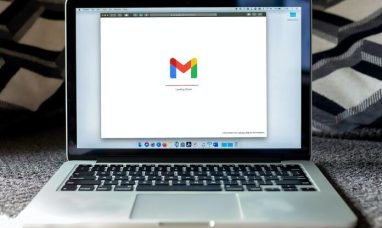BuzzFeed’s (NASDAQ:BZFD) year-long selloff has reached its limit. Even with quarterly revenue in decline over the prior year, a substantial total debt level, and ongoing net losses from operations, the digital media company’s price to trailing 12-month sales multiple of 0.17x represents a speculative entry point. Common stock is currently trading at the lowest price since it became public. Indeed, it is likely trading at its lowest level since its inception in 2006, with its Series F and Series G investment rounds in 2015 and 2016 valuing it at $1.7 billion despite significantly reduced revenue. As a result, I’ve taken a small speculative position in the common shares with a view to holding for at least a year, on the assumption that a normalization of the current turbulent macroeconomic environment will greatly improve stock market appetite for loss-making companies, and that the management turnaround plan should be aggregated with this process.
To be clear, this is a trade based on no more rate hikes this year and a probable decrease in the first half of 2024. This is happening as BuzzFeed undergoes massive cost-cutting measures in order to rightsize its operations and improve its underperforming profitability. However, it’s worth noting that the Fed has explicitly declared that more raises are on the way in 2023, and the stock market is currently pricing in an 88.7% chance of a hike at the July 26th FOMC meeting, up from a 74.4% chance a week ago. However, as Powell has warned, a second consecutive halt is inevitable if headline inflation falls below the market consensus of 3.6% at the forthcoming July 12th inflation update.
Through a merger with a special purpose acquisition company, the company just went public a few weeks before Christmas in 2021. If this had happened a year earlier, BuzzFeed’s worth would have skyrocketed because of the unbridled excitement that characterized the brief epidemic period preceding what would be 10 consecutive interest rate hikes. While we are still a long way from the zeitgeist that marked the pre-rate hike period, the June FOMC rate hold could prove to be a watershed moment for long-suffering bulls.
Risks
There are two primary reasons to continue to avoid BuzzFeed. To begin, the company reported fiscal 2023 first-quarter sales of $67.2 million, a 27% year-over-year decrease but a $2.93 million increase over consensus projections. Advertising revenues fell to $34.2 million from $48.6 million the previous year, representing a significant decrease across all three revenue areas. What is causing this? Companies in the United States have reduced their advertising spending in response to rising interest rates and the looming threat of a recession. Ad expenditure fell for the eighth month in a row in April. Furthermore, if the US economy deteriorates, firms may reduce their ad spending even further, with PIMCO stating in early July that they foresee a worse landing of the global economy than current market expectations.
BuzzFeed’s massive net losses are another reason to avoid the commons. The company lost $36 million in the first quarter, compared to $44.8 million in the year-ago period, but it still accounted for 54% of revenue and 40% of its market valuation. Bears, who account for 6.5% of the short interest, would be correct in claiming that the company lost 210% of its market cap in the preceding 12 months as of the end of its first quarter. The trendline for losses is likewise pointing downward.
BuzzFeed’s total debt at the end of the quarter was $229.2 million, causing interest expenses to rise $630,000 from the previous year to $5.42 million. As a result, from a fundamental standpoint, BuzzFeed provides a few reasons to rejoice. This is a loss-making corporation based on ad sales that is now seeing revenue drop while net losses rise. Critically, there will be no road to valuation expansion if net losses continue to be disproportionate, especially in the face of improved market appetite for formerly ‘risk-off’ tickers. In addition, the company is now trading below Nasdaq’s minimum listing threshold, putting it at risk of being shifted to over-the-counter trading. If the commons continue below the $1 listing minimum through 2023, a reverse stock split would be required as a remedy.
BuzzFeed is closing its journalism business, laying off 12% of its personnel, and cutting sales and marketing spending by $2.5 million year over year in the first quarter. R&D spending was cut from $7.19 million to $3.82 million, while G&A expenses were reduced from $22 million to $10.56 million. During the company’s first-quarter earnings call, management expressed optimism about the possibility of more cost cutbacks. They have made a broad commitment to achieving and generating high cash flows over time.
With millions of social media followers across its Tasty, Hot Ones, and Complex brands, the company has a huge Gen Z and Millennial following. These are significant intangible assets that will be used to generate money if ad expenditure in the United States returns. I disagree with the AI content generation plan since it appears like management has seized on a completely unproven technology to generate attention. It harkens back to when the metaverse was the lingua franca of stock market excitement. From an investment standpoint, the potential of BuzzFeed’s policy adjustment remains to be seen in light of management’s bullish comments on the potential of AI on their earnings call.
Bottom Line
This will be a highly speculative move, but one made less dangerous by a $50 million cash and equivalent position at the conclusion of the first quarter. This is in comparison to a cash burn from operations of only $200,000 and a cash runway of more than $600,000 in the first quarter. However, the trailing 12-month free cash flow of $12.7 million predicts a smaller liquidity runway if future costs are not controlled. Against this, the company will most likely not require external financing until fiscal 2025. Critically, failure to reduce cash burn would significantly shorten the time required until BuzzFeed requires what would be extraordinarily dilutive capital against their existing stock price with heavy debt. I believe the company has time to completely realize its turnaround, and I believe the value here, especially in light of what appears to be a more engaging market sentiment, provides for a good medium-term but extremely speculative bet.
Featured Image: Freepik © storyset









